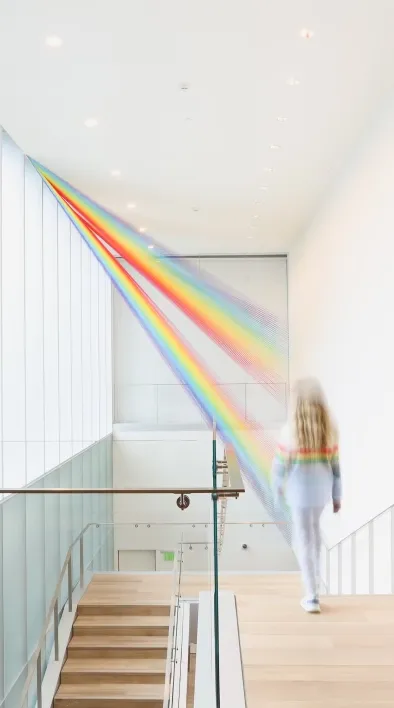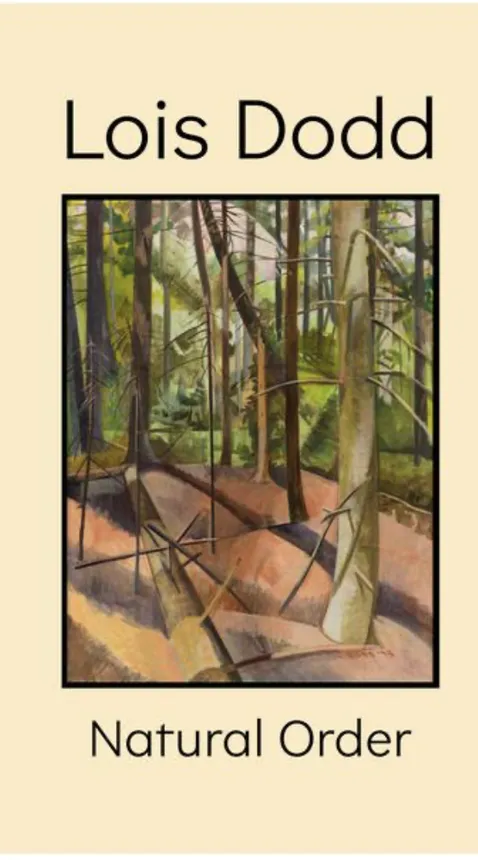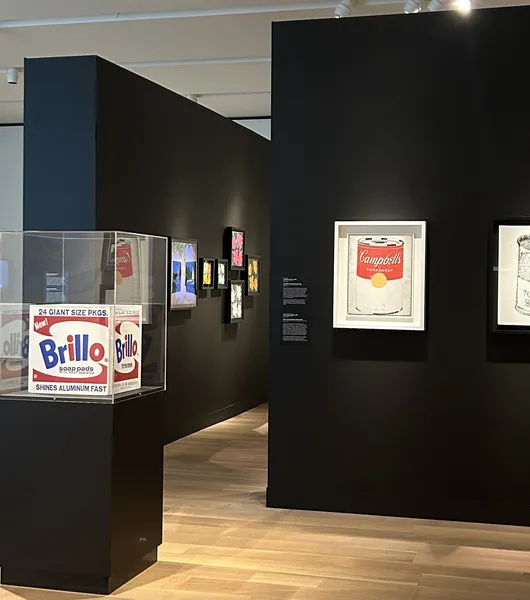
Andy Warhol: small is beautiful
April 6, 2024–October 13, 2024, Grossman Family Gallery & Barbara and Edward Netter Foundation Gallery
A leading figure of the Pop Art movement, Andy Warhol (American, 1928–1987) produced some of the most celebrated imagery of the twentieth century.
A leading figure of the Pop Art movement, Andy Warhol (American, 1928–1987) produced some of the most celebrated imagery of the twentieth century. At once familiar and iconic, Warhol’s depictions of soup cans and celebrity portraits were steeped in the era’s advertising, consumerism, and mass media, challenging entrenched hierarchies of fine art and popular culture. Although Warhol worked across media, this comprehensive exhibition includes nearly one hundred paintings, all unique works, some as diminutive as 5 x 5 inches. Andy Warhol: small is beautiful illuminates the artist’s working process, highlighting his exploration of seriality, repetition, color, and scale.
Born in Pittsburgh, Pennsylvania, in 1928, Warhol moved to New York City in 1949 where he pursued a career in magazine and commercial illustration. During the early 1960s he began exploring multiplicity and techniques of mechanical production, creating variations on the same subject to achieve what he later referred to as an "assembly-line effect." Following the success of his Campbell’s Soup Cans series (1962)—perhaps the most iconic example of this approach—Warhol developed his now-signature silkscreen process. Drawing from several source images, he produced multiple versions of each picture, experimenting with different formats and colors of silkscreen ink and paint.
Organized thematically, Andy Warhol: small is beautiful provides an intimate look at the artist’s best-known subjects. Key works include an early iteration of Campbell’s Soup Can (1961) along with celebrated self-portraits and portraits of artists, friends, celebrities, and political figures including Joseph Beuys, Roy Lichtenstein, and Mao Zedong. Other paintings explore the artist’s career-long engagement with themes ranging from Catholicism and mass consumerism to nature and sexuality. The exhibition concludes with the Shadow Paintings, Oxidation Paintings, and Positive/Negative series, which reveal a late-career tendency toward abstraction and nonrepresentational subject matter. The minute scale of each of these works invites visitors to look more closely and to discover why small is beautiful.
This exhibition is presented in partnership with the Hall Art Foundation.
Support for Andy Warhol: small is beautiful is generously provided by Bank of America, Lugano Diamonds, CT Department of Economic and Community Development, CT Humanities, The Charles M. and Deborah G. Royce Exhibition Fund, and the S & L Marx Foundation.


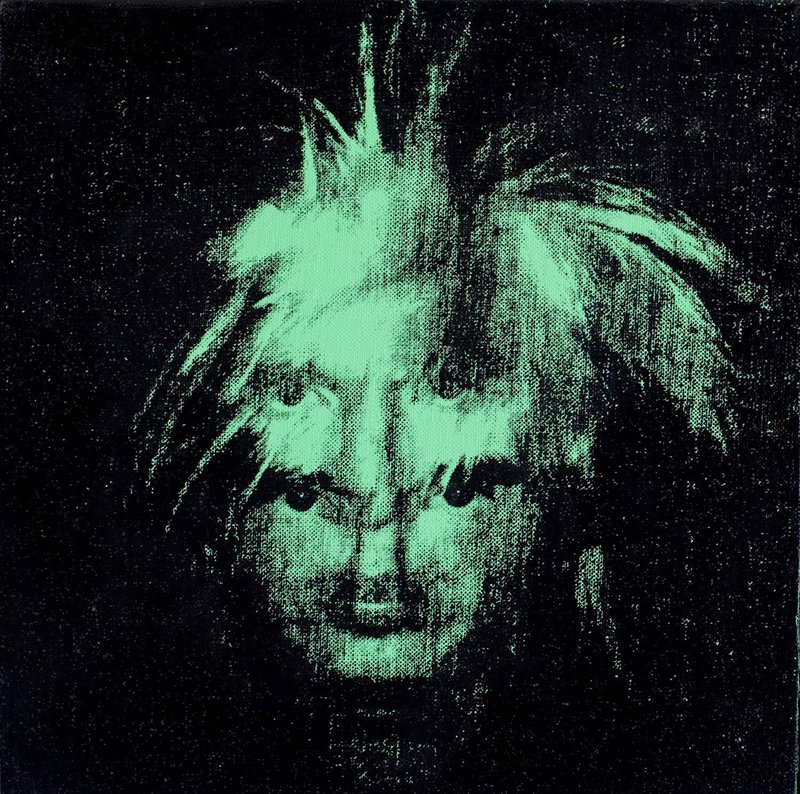
Andy Warhol (American, 1928–1987)
Self-Portrait (Fright Wig), 1986
Synthetic polymer paint and silkscreen ink on canvas, 10 x 10 in.
Hall Collection, courtesy Hall Art Foundation
© 2024 The Andy Warhol Foundation for the Visual Arts, Inc. / Licensed by Artists Rights Society (ARS), New York
Courtesy Hall Art Foundation
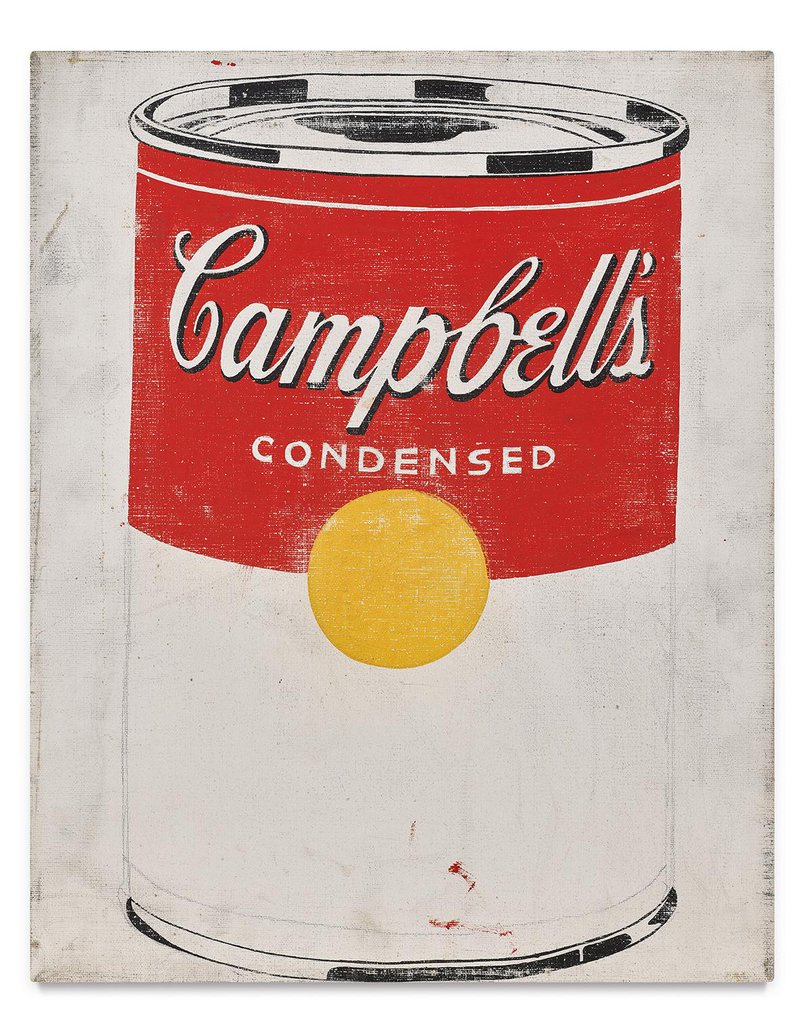
Andy Warhol (American, 1928–1987)
Campbell's Soup Can, 1961
Casein and pencil on canvas, 20 x 16 in.
Hall Collection, courtesy Hall Art Foundation
© 2024 The Andy Warhol Foundation for the Visual Arts, Inc. / Licensed by Artists Rights Society (ARS), New York
Courtesy Hall Art Foundation
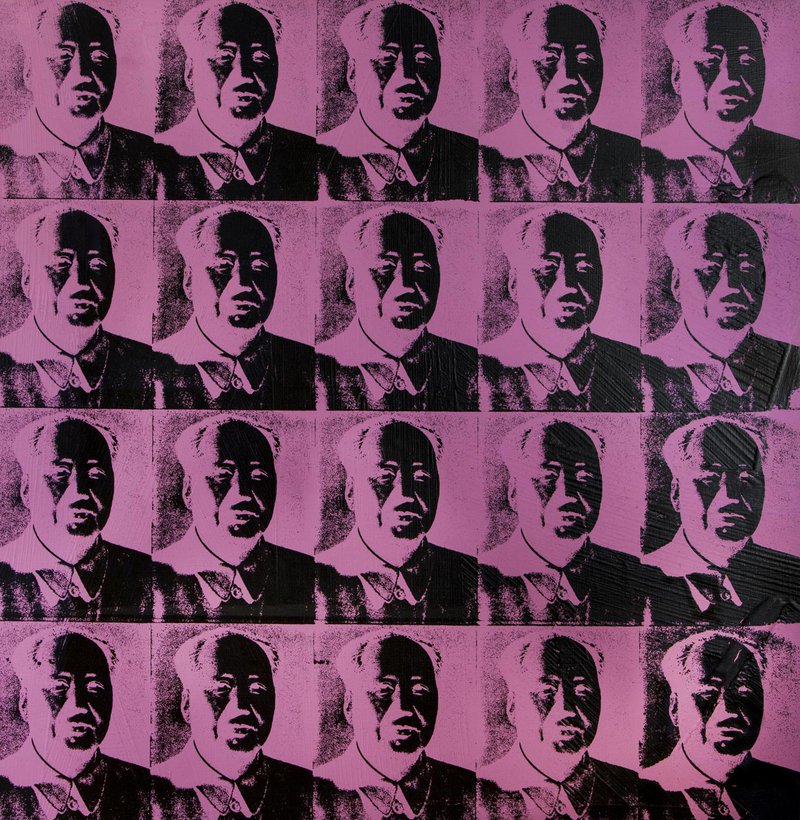
Andy Warhol (American, 1928–1987)
Twenty Fuchsia Maos, 1979
Synthetic polymer and silkscreen inks on canvas, 39-1/2 x 38 in.
Hall Collection, courtesy Hall Art Foundation
© 2024 The Andy Warhol Foundation for the Visual Arts, Inc. / Licensed by Artists Rights Society (ARS), New York
Courtesy Hall Art Foundation
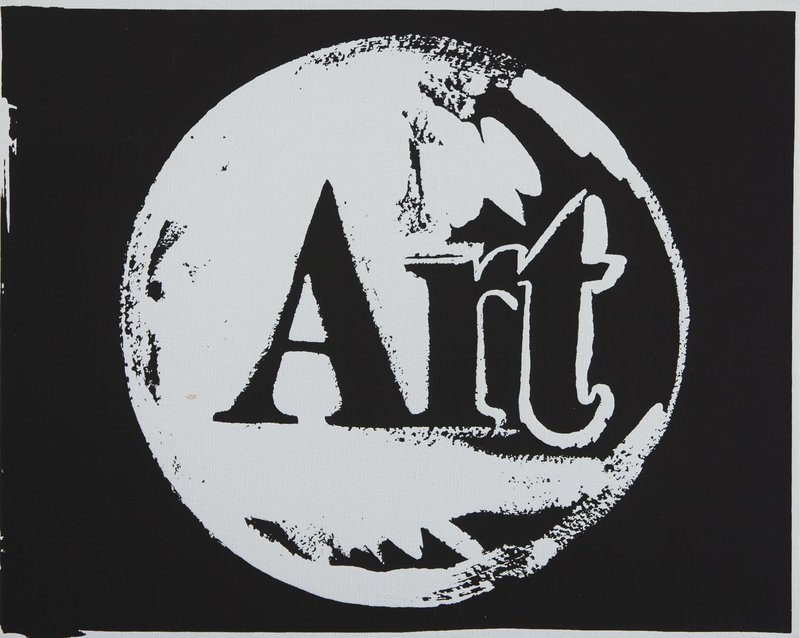
Andy Warhol (American, 1928–1987)
Art (negative), 1985-86
Synthetic polymer paint and silkscreen ink on canvas, 16 x 20 in.
Hall Collection, courtesy Hall Art Foundation
© 2024 The Andy Warhol Foundation for the Visual Arts, Inc. / Licensed by Artists Rights Society (ARS), New York
Courtesy Hall Art Foundation
